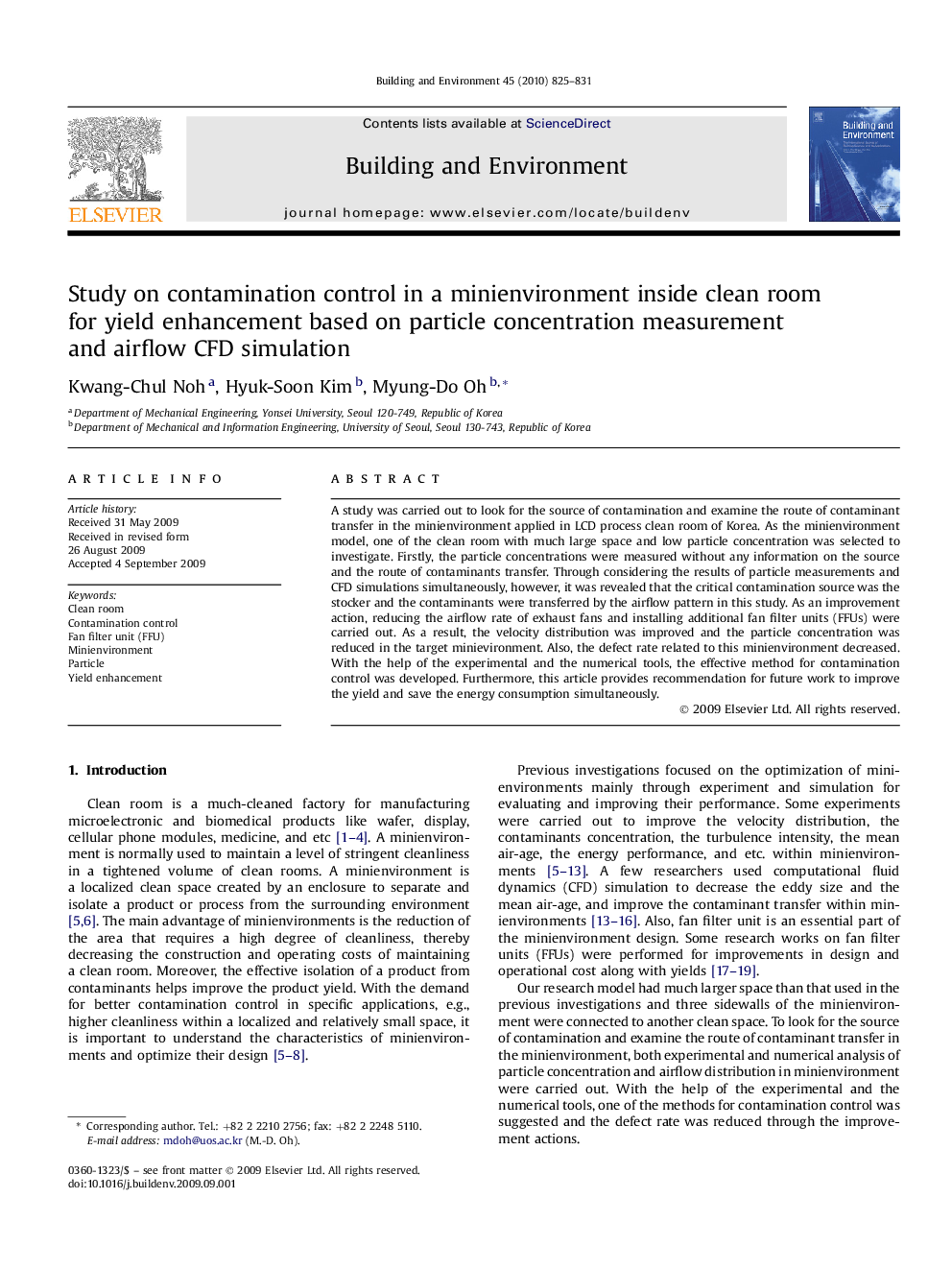| Article ID | Journal | Published Year | Pages | File Type |
|---|---|---|---|---|
| 249117 | Building and Environment | 2010 | 7 Pages |
A study was carried out to look for the source of contamination and examine the route of contaminant transfer in the minienvironment applied in LCD process clean room of Korea. As the minienvironment model, one of the clean room with much large space and low particle concentration was selected to investigate. Firstly, the particle concentrations were measured without any information on the source and the route of contaminants transfer. Through considering the results of particle measurements and CFD simulations simultaneously, however, it was revealed that the critical contamination source was the stocker and the contaminants were transferred by the airflow pattern in this study. As an improvement action, reducing the airflow rate of exhaust fans and installing additional fan filter units (FFUs) were carried out. As a result, the velocity distribution was improved and the particle concentration was reduced in the target minievironment. Also, the defect rate related to this minienvironment decreased. With the help of the experimental and the numerical tools, the effective method for contamination control was developed. Furthermore, this article provides recommendation for future work to improve the yield and save the energy consumption simultaneously.
